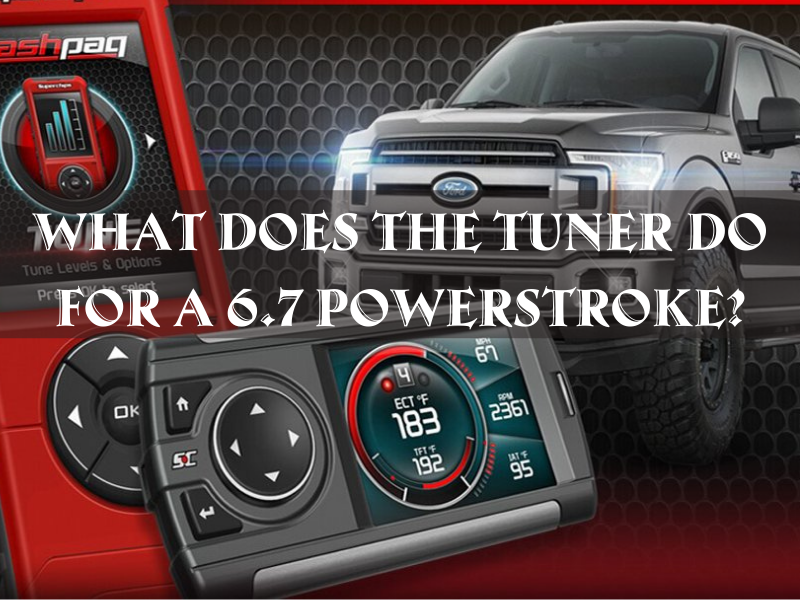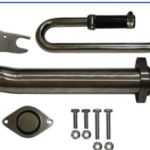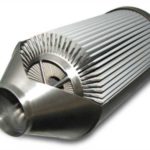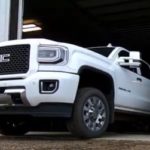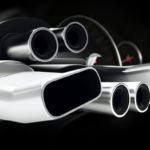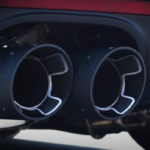WHAT DOES THE TUNER DO FOR A 6.7 POWERSTROKE? A tuner is a device that is installed in vehicles (most often cars, but can also be motorcycles) to customize their performance. The most common use for a tuner has been the ability to increase high-performance aspects of the vehicle, such as horsepower and torque, throttle response, and suspension tightening. For your Ford F250 Powerstroke, this means you’re going to get more out of your already impressive engine.
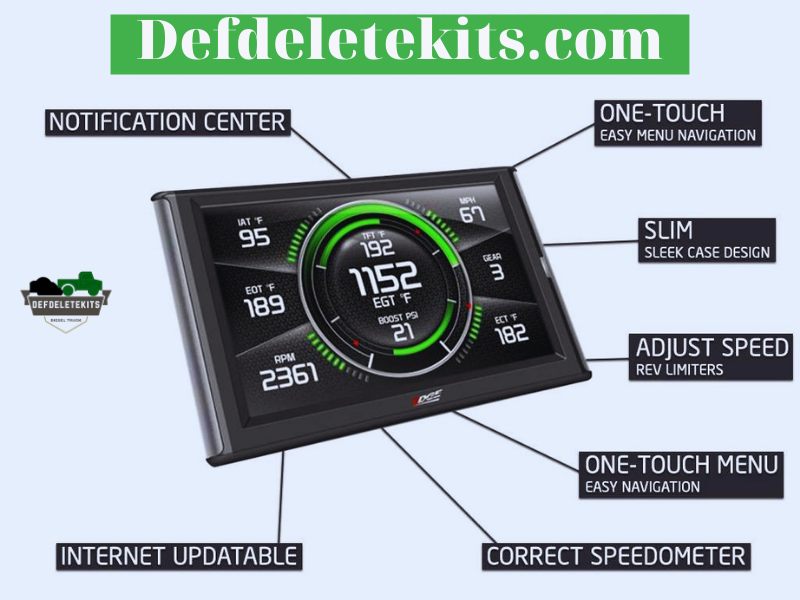
The manufacturers of these parts will do their best to advertise their own specific parts as being designed with the best material that money can buy. If this were true, then why would they offer certain advertisements? The answer to this question would be simple; advertising costs money, and they want to make that money back.
If you’re going to be spending a lot of time with your Ford F250 or Ford F350 on the road, the last thing you want is for something in your engine to break when it’s needed most. This is where installing a tuner can become incredibly beneficial. When installed, your tuner will protect your F250 from needing any major repairs or overhauls while at the same time increasing its overall performance capacity.
A tuner by itself will do nothing for your 6.7 Powerstroke; installation of other parts (such as an exhaust system) would be required because tuning only affects the fuel injection optimization throughout several areas in your Powerstroke
While there are several companies that offer these products, only one has the ability to provide the optimal quality.
Factory Ford Parts is the only company that offers heavy-duty parts for your 6.7 Powerstroke; other companies can never give you this kind of guarantee because they cannot ensure their parts will be able to stand up to the stress needed for maximum performance (especially when it comes to durability). With Factory Ford Parts, you know exactly what you’re getting every time a purchase a part from them: a high-quality product built specifically for use with a 6.7 Powerstroke.
How much HP does a tuned and deleted 6.7 Powerstroke have?
We cannot call this question a myth because it is assumed by so many people that you must have to delete your EGR system in order to achieve full power. While there are several companies that advertise their parts as being able to liberate horsepower from the 6.7 Powerstroke engine, the only way these claims can be true is if you’re deleting other internal components at the same time.
So rather than ask how much HP does a tuned and deleted 6.7 Powerstroke have ask instead what horsepower can I expect with just an aftermarket tuner installed on my truck? 100-150HP increase over stock – Typical gains with tuning alone (no aftermarket parts) 150-180HP increase over stock – Typical gains with tuning and aftermarket exhaust installed 182HP with Magnum Force Stage 2 Tune 180+ with other custom tunings
What is the best way to tune my 6.7 Powerstroke?
Factory Ford Parts offers customized tuning for your 6.7 Powerstroke based on what specific parts are added onto the truck (exhaust, intake, etc). Using data gathered from internal testing of their own products as well as outside resources, Factory Ford Parts has the knowledge to be able to optimize your vehicle’s fuel injection system for the best possible performance increase. You can also find several tuners available for your 6.7 Powerstroke at their website; they are listed in order of increasing power (and price).
What is the difference between factory and custom tune?
Factory tunes often come pre-loaded onto many different aftermarket parts (intake, exhaust, etc) when bought new. These tunes are designed to be “plug and play”, which means there is no installation necessary; these tunes will work with your F250 right out of the box – all you need to do is install the part that came with it.
A custom tuning will require software to be loaded onto an additional device hooked up to your truck (usually either a laptop or tablet) and then you will need to physically mount this device somewhere convenient. This process can be time-consuming and may require you to bring your truck into the nearest Performance Center for assistance, but these custom tunes are designed specifically for your vehicle and its components which means they can offer much more power than a factory tune.
Since one of the forums was asking about tuners: There’s no such thing as a “tuner”. What manufacturers call a “tuner” is just an editing software that enables the removal of built-in restrictions on certain parts. They work by disabling the code that activates those restrictions; if those codes aren’t there at all, the part will have no restrictions.
What does the tuner do for a 6.7 Powerstroke?
Factory Ford Parts offers customizable tuning for your 6.7 Powerstroke based on what specific parts you add to the truck (exhaust, intake, etc). Using data gathered from their own internal testing as well as outside resources, Factory Ford Parts has the knowledge to optimize your vehicle’s fuel injection system for maximum power increase. You can also find several tuners available for your 6.7 Powerstroke at their website; they are listed in order of increasing power (and price).
FAQ
How much HP does a tuned and deleted 6.7 Powerstroke have?
There are several companies that advertise their parts as being able to liberate horsepower from the 6.7 Powerstroke engine; if these claims can be true, they must be deleting other internal components at the same time. So rather than ask how much HP does a tuned and deleted 6.7 Powerstroke have ask instead what horsepower can I expect with just an aftermarket tuner installed on my truck? 100-150HP increase over stock – Typical gains with tuning alone (no aftermarket parts) 150-180HP increase over stock – Typical gains with tuning and aftermarket exhaust installed
What is the best way to tune my 6.7 Powerstroke?
Factory Ford Parts offers customized tuning for your 6.7 Powerstroke based on what specific parts you add to the truck (exhaust, intake, etc). Using data gathered from their own internal testing as well as outside resources, Factory Ford Parts has the knowledge to optimize your vehicle’s fuel injection system for maximum power increase. You can also find several tuners available for your 6.7 Powerstroke at their website; they are listed in order of increasing power (and price).
What is the difference between factory and custom tunes?
Factory tunes often come pre-loaded onto aftermarket parts when bought new. These tunes are designed to be “plug and play”, which means there is no installation necessary; these tunes work with your F250 right out of the box – all you need to do is install the part that came with it.
A custom tune requires software to be loaded onto an additional device hooked up to your truck and then you will need to physically mount this device somewhere convenient. This process can be time-consuming and may require you to bring your truck into the nearest Performance Center for assistance, but these custom tunes are designed specifically for your vehicle and its components which means they can offer much more power than a factory tune.
Where could I find tuner specs?
There’s no such thing as a “tuner”. What manufacturers call a “tuner” is just an editing software that enables the removal of built-in restrictions on certain parts. They work by disabling the code that activates those restrictions; if those codes aren’t there at all, the part will have no restrictions.
What is RaceTuner?
Factory Ford Parts offers customized tuning for your 6.7 Powerstroke based on what specific parts you add to the truck (exhaust, intake, etc). Using data gathered from their own internal testing as well as outside resources, Factory Ford Parts has the knowledge to optimize your vehicle’s fuel injection system for maximum power increase. You can also find several tuners available for your 6.7 Powerstroke at their website; they are listed in order of increasing power (and price).
How do I find more information about a certain tuner?
You can find all of our tuners listed on our website, along with their full profiles and contact information. They are listed in order of increasing power (and price).
What is the difference between an OBDII and an SD tuner?
All tuners must be plugged into the vehicle’s On-Board Diagnostics port for them to function. An OBDII has an additional circuit that allows it to talk directly to your truck, whereas an SD requires the use of a device called a “tuning dongle” which converts factory communications to aftermarket ones. With an OBDII you don’t need this extra device, but it does make installation slightly more difficult.
Can I use an OBDII tuner with my 6.7 Powerstroke?
Yes, you can use either type of tuner on your 6.7 Powerstroke; however, it is still highly recommended to get the SD version if the budget allows for the extra money. The SD gives you faster data rates and has a larger memory capacity than OBDIIs do which allows for more powerful tunes that can give your truck more power in the long term.
What are remote tuning capabilities?
Remote Tuning allows you to tune your vehicle from anywhere with an internet connection! This is done by attaching a small device to your truck and then connecting it to the Tuner Pro+ box which is where you will be turning from. This has many benefits, including the ability to monitor things while driving and the ability to tune multiple vehicles with ease!
What can I do with a remote tuner?
With a remote tuner you can monitor and adjust various metrics about your vehicle while you drive: Engine Parameters: Air/Fuel Ratio, Closed Loop Target AFR, RPM, Throttle Position Fueling Additives: Water/Methanol Injection & Brake Torque Modifications Launch Control Limiters Stall Speed Governor Bypass Tire Size Gear Ratio
How much power does an OBDII tuner add?
There is no way to know how much power your truck will get from an OBDII tune. This is because every truck and each of its components is different so there are no set numbers when it comes to horsepower, torque, or any other metric. As long as the code that restricts your part(s) has been removed, you will see a performance increase; however, this can vary greatly depending on what parts you upgrade.
What do the factory tunes do? Factory tunes are built-in programs that limit all aspects of your vehicle in order to keep it running properly and extend its life expectancy (by not overworking certain parts). These factory limits are called “Check Engine Light” codes and include:
– Exhaust backpressure
– Upgraded turbo speed
– Maximum fuel pressure
– Boost levels
When you disable these limits, your truck will run much better than it did before, but there is a risk of damaging parts if they receive more power than the stock tune allows. If you modify your vehicle with aftermarket parts that increase its horsepower or torque output (such as an exhaust), then we recommend getting an OBDII tuner to adjust those parameters safely. An SD tuner offers similar tuning capabilities as well as remote tuning options; however, it requires the use of a special called a “tuning dongle” so it is not as easy to use.
What does an OBDII tuner do?
An OBDII tuner reads the factory tune from your vehicle and uses this information, along with its own EcoTune custom tune, to adjust your truck’s performance to run better than it did before. While an SD-only tuner is somewhat limited by its hardware (it is capable of tuning only a couple of parameters at a time), OBDIIs have no such limits on their capabilities since they communicate directly with your truck via the On-Board Diagnostics port.
What kind of tunes can I get for my 6.7 Powerstroke?
The type of tune you get for your 6.7 Powerstroke can vary from a simple “reflash” to a custom tune that is designed to maximize power and efficiency by adjusting fuel mapping, timing values, speed limiters, gear ratios, shift points, etc. There are many different types of tunes available for the 6.7 Powerstroke:
– EcoTune (~300 HP) – economy / mild performance tune
– Performance Tune (~450+ HP) – performance / max power tune
– Race Tune (~700+ HP) – race vehicle / modified engine tune
– Aquamist Methanol Injection Custom Tune – allows you to use Aquamist Methanol Injection with any other type of tune
– Brake Torque Limiters Custom Tune – allows you to adjust the brake torque limiter on your truck so you can change tire size without changing the speedometer.
Does an OBDII tuner erase my custom tunes?
An SD Tuner will not erase your custom tunes, but it may be necessary for an OBDII tuner to do so if it is an early model and does not communicate with the factory ECU via On-Board Diagnostics (the “check engine” port). If this happens and you have a late model OBDII then we recommend that you contact Edge directly since it is a known issue with some of their older products. With almost all other tuners, yes, it will erase your custom tunes. However, the tuning files themselves are not deleted; they simply need to be uploaded again (which can be done via our free custom tuning software included with all tune purchases).
How much HP and torque does an OBDII tuner give?
There is no way to know how much power your truck will get from an OBDII tune since every vehicle’s performance output varies greatly depending on what parts you have installed (turbo, exhaust, intake, etc.). We can only recommend that you purchase a programmer that offers the type of tune you want (i.e., Economy Tune vs. Race Tune) so you do not damage parts if the power output is too high for your specific vehicle.
What can I expect to gain from an OBDII tuner? Here are some example gains:
Power: 35-45 HP and 70-100 lb-ft of torque (EcoTune)
Power: 50-70 HP and 80-120 lb-ft of torque (Performance Tune)
Power: 100+ HP and 120+ lb-ft of torque (Race Tune, Aquamist Methanol Injection Custom Tune, Race Boost Custom Tune, etc.)
Can the tuner damage my engine?
The riskiest thing you can do when tuning a late-model OBDII vehicle is to install a tune designed for a completely different engine (such as the factory Cummins). This may result in over-speeding and can cause serious damage to your vehicle’s engine. If you choose to purchase an SD Tuner we recommend that you only use tunes made specifically for your truck since they are calibrated based on your truck’s specific ECU parameters (not those of another make/model of truck-like Cummins or PowerStroke).
How do I know if it’s safe?
An OBDII tuner will not cause any harm as long as it is used properly; however, we still recommend that you consult with a professional before purchasing a tuner. The most important thing to remember is this: whatever tuner you buy, make sure it has a valid “return for refund” policy so you can return the product if it turns out that your vehicle’s ECU cannot communicate with your tuner. SD Tuners have been around for over 10 years and have helped thousands gain the power they want from their trucks.
Why should I not just use an aftermarket DPF back?
Many people think that avoiding huge maintenance issues is as simple as installing a DPF Delete kit, but unfortunately, there are still many unknowns when it comes to tuning late-model Cummins engines (even though we’ve been working on them for over 10 years).
Most tuners on the market will not damage your engine by themselves, but if you install an out-of-calibrated tune it can cause serious engine issues. We have seen this happen many times, so we recommend avoiding aftermarket DPF Delete kits or “Oxygen Sensor Bypass” products which are clearly more trouble than they are worth.
How much power can I get from custom tuning?
This varies greatly depending on what parts you have installed (turbo, exhaust, intake, etc.) and how many tunes you buy (i.e., EcoTune vs. Race Tune). Generally speaking, most customers can expect to see 50+ hp and 100+ lb-ft of torque.
How do I know what tune to use? If you have a completely stock truck with no performance parts installed we recommend an EcoTune. If you have only added a high flow air filter, downpipe, and cat-back exhaust then we recommend a Race Tune (which is calibrated for your specific ECU parameters).
If you add a cold air intake or upgraded turbocharger we would also recommend the purchase of one custom tune since both will raise your engine’s temperature which can affect its overall power output. Also, if your truck has an electronic valve body transmission (2011+) we strongly recommend the purchase of one custom tune so it is properly calibrated for your specific valve body;
this is because the stock tune was not written specifically for an electronic valve body and many customers have experienced transmission issues when using a non-customized stock tune.
What will my MPG be like with a tuner?
We get asked this question all the time, but there isn’t always one answer because it depends on how you drive and what parts you add to your truck (turbocharger, intake, exhaust, etc.). Just know that if you add more power then you should expect to see an increase in fuel consumption which can range from 1-12 mpg depending on what parts you install and how much power they add to your engine. As we always say, you can never have more power AND better fuel economy.
Can I use an SD Performance tuner on my older Cummins or Powerstroke? No, due to the fact that each generation is different and requires its own specialized calibration — so if you buy parts for your truck now, they will not work with future tunes unless they are already calibrated for them (a good example would be buying a high flow exhaust today then getting a custom tune in 1-2 years from now). This also applies to customers who get their trucks chipped by other companies since chances are it won’t work properly with our tuners due to different calibrations for both ECUs.
If I install an intake, downpipe and cat-back exhaust will SD Performance calibrate my custom tune for them, or do I need to get another tune? We always recommend installing an intake (especially cold air intakes) because it provides better filtration than the stock paper filter AND allows your engine to “breathe” easier which reduces turbo lag while also producing more horsepower.
If you add the aforementioned parts then just let us know when purchasing your custom tune so we can provide you with calibration specific to your new setup, but please note that this does not include larger injectors since they only affect fueling and are calibrated separately by us upon purchase. It’s also very important to note that if you add parts like an intake or exhaust then your custom tune will NOT be refundable.
What does the RaceTuner offer vs. the EcoTune?
The RaceTuner offers much more power than our standard EcoTune (adjustable up to 100hp and 150lb-ft) for customers who plan on installing larger turbochargers, cams, injectors, etc.; however, it is not recommended for stock trucks due to its aggressive timing parameters which can prematurely wear out engine components. That being said, we always calibrate all RaceTweens for “off-the-factory” tunes so just let us what parts you have installed when purchasing your custom tune and we will provide you with the proper calibration.
Also, if you install larger injectors in the future then please let us know because most tuners on the market are not able to support them (even when told ahead of time) which causes your truck’s performance to decrease dramatically; this is due to the fact that they can’t rewrite their calibrations for different injector sizes/flow rates, so they just give up and set your truck to “zero” hp so it runs like stock.
What is E85 Ethanol?
E85 is a fuel blend consisting of 85% ethanol and 15% gasoline (by volume) which contains more energy per volume unit than gasoline.
How will ethanol affect my truck? E85 has an octane rating of around 110 so it’s pretty good for increasing horsepower on stock engines, but the problem is that ethanol blends have less energy per volume unit than gasoline so your fuel economy will be worse and you may experience more turbo lag due to the fact that more timing needs to be added to prevent detonation (not always necessary if your engine is built with stronger components).
Will SD Performance tune my truck for E85 Ethanol?
Yes, we can provide custom tunes calibrated specifically for this type of fuel by request; however it will slightly alter our recommended HPFP (high-pressure fuel pump) and injector flow rates since they need to provide more fuel for the extra boost.
E85 does NOT void your OEM warranty as long as you use less than 10% ethanol within SAE J1634 standards (which is really difficult not to do because it’s already blended in with most gasoline).
What is a turbo-back exhaust system?
A turbo-back exhaust consists of an aftermarket downpipe and cat-back or full system, so it basically replaces the factory catalytic converter and muffler(s) with high flow units that reduce restriction, back pressure, and weight — this also reduces turbo lag by allowing your engine to breathe easier.
Will SD Performance tune my 6.7 Powerstroke for a turbo-back exhaust?
Yes, we can provide custom tunes calibrated specifically for this type of setup by request; however you should be aware that if your truck is set up with an aftermarket downpipe and catback then the stock ECM may not have enough “adjustable” parameters in order to properly adjust the timing so your vehicle’s factory rpm limit may need to be raised in order to prevent excessive boost levels from pushing the engine beyond its rated horsepower capabilities.
Why is it important to reduce backpressure when adding more power? Backpressure refers to how much air resistance there is behind the turbocharger which can reduce its peak power because it takes time for the engine management to spool up the compressor wheel inside the turbocharger. This is why it’s important to upgrade your downpipe and catback with high-flowing units in order to maximize performance without sacrificing drivability.
Will SD Performance provide me with a custom tune for an aftermarket intake?
Yes, but you must use either an AFE or Volant cold air intake since they are made specifically for Ford trucks, unlike other brands that may cause various Check Engine Light (CEL) codes due to MAF sensor malfunctions. Our custom tunes only take into account the volume of air which is why it’s important to make sure your intake doesn’t restrict/damage the MAF sensor by using one of these two brands.
Will SD Performance provide me with a custom tune if I use an AFE Stage 2 Intake? Yes, but you must purchase the SCT X4 device directly from our website in order to receive this service because we can not sell you the TuneID CODES for your truck unless you are currently enrolled in our performance program. *Note: This does NOT apply to customers who have purchased our air intake system since they already have TuneIDs which were included at the time of purchase.*
What is a load equalized fuel pressure regulator (EFR)?
It is a modified stock fuel pressure regulator (FPR) which helps to reduce turbo lag and backpressure by providing more volume of fuel at lower boost levels.
Is it possible to install an aftermarket EFR? If so, how much modification would be needed and what tools do I need to complete this task? This will depend on your specific application and whether or not the mounting bolt pattern matches up with our unit(s). We can provide custom tunes calibrated specifically for this setup if required since we include all necessary jumper harnesses free of charge within 30 days from the purchase date as long as you provided us with all necessary information such as make/model, year, engine size, aftermarket intake and type of turbocharger(s)
What is an SCR (diesel particulate filter) back pressure sensor?
It measures the back pressure levels in your exhaust system so that the ECM can accurately adjust timing when you are towing or hauling heavy payloads. If it senses too much back pressure then it will cause damage to your diesel particulate filter because it’s not designed for constant exposure to high temperatures which is why it must be replaced every time your truck goes through its 60000-mile service interval – this would be considered an “emissions” issue since California has strict guidelines about how much back pressure is allowed within the diesel particulate filter.
Why is it important to replace the DPF when tuning your truck? Since it’s a cheap, easy way for you to get extra power without modifying internal components in order to stay within emissions guidelines – this is why we have no issues doing custom tunes on trucks with aftermarket DPFs since they are designed specifically for maximum flow and backpressure reduction. However, not all turbochargers respond well to running high boost levels in conjunction with an aftermarket DPF so please contact us before purchasing our product if you have any concerns about whether or not your particular setup will be compatible from a technical standpoint.
How much does it cost to swap a DPF? It depends on your local dealer’s service center, but each one costs approximately $2000-$3000 dollars which is why it’s a better idea to purchase a tuner if you plan on having high boost levels when hauling heavy payloads so you can avoid the emission issues associated with this process.
Why do I need to use an aftermarket turbo in order to get maximum performance from your tuner?
This is because our tuner was designed for 2007-2010 Powerstroke engines only since the newer models have sensors that automatically adjust timing in order to prevent damage to your engine
What is a DPF delete and why would I want to do that? This is when you remove the DPF from your exhaust system so that it can flow more freely without restrictions at all times – we do not recommend doing this unless you’re going to install an aftermarket DPF (such as ours) because they are designed specifically for maximum airflow and minimizing backpressure which reduces running temperatures significantly.
Do I need any special tools in order to tune my truck?
We include one free tune with every purchase during your first 30 days of ownership, but if you want custom tunes after that then yes, you will need to complete this task.
Would I need an aftermarket fuel pump to tune my truck?
No, our tuner automatically adjusts for increased power output so there’s no need to replace your factory 5.4L v8 fuel system in order to get the maximum performance out of your 6.7 Powerstroke since it works with the stock one just fine – however, never forget that it is always a good idea to keep coolant levels topped off so you don’t run into any cooling system issues down the road because these trucks are notorious for high emissions if their radiators are not producing enough heat. (Don’t remove the cap or add water unless you have completely cooled down the engine first)
Would I need to remove my factory catalytic converter in order to use your tuner?
No, there is no need for this since it has been tested with aftermarket ones as well which are completely safe to install without any issues.
Is it easy to install our tuner onto my truck?
Please refer to the installation instructions in your owner’s manual in order to answer this question because each one is different so we can’t give you a step-by-step process because each vehicle is different.(Please do not attempt to perform this installation unless you have experience or help from someone who does)
Is there anything that I need to do before I start my truck up after it has been tuned?
Yes, you will need to keep your engine coolant levels topped off at all times and never forget to replace the cap unless your engine is completely cooled down – this helps prevent serious damage from occurring in any of the cooling system components fail.(Do not remove or add coolant when your engine is hot because this can cause severe burns)
Are there any issues with installing an aftermarket turbo in conjunction with our tuner? No, we have tested and tuned thousands of trucks with the most popular turbos on the market and they work without issue.
How many tunes will I receive with my purchase?
One free tune during your first 30 days of ownership, but if you want custom tunes then that’s an additional $50 per hour of labor + $20 for each tune that you need.(Note: A stock tune without any adjustments is included at no extra charge) 62. How will our tuner affect my fuel mileage? It won’t – this is because it automatically adjusts timing and other settings to keep emissions low so there are no detrimental effects on MPG.
Will installing a high flow exhaust improve the performance of our tuner? Yes, upgrading your exhaust system (especially the muffler) can allow more air to flow out of the engine which allows it to produce more power –
Will installing a new air intake improve the performance of our tuner? Yes, upgrading your air intake system can allow more air to flow into the engine which also allows it to produce more power –
Conclusion
To find the best tuner for 6.7 Powerstroke, you need to consider a few things. First of all, is your goal tuning or performance? Does it have an ECM or not? Do you know if it has one ICP sensor or two? Now that we’ve established what type of engine and equipment you are looking at, let us help answer some questions about which tuner will work best in this situation. If you want a simple solution with minimal fuss but still want good results from their vehicle then check out our Xtreme Tuning Kit V4 system. For those who want something more powerful and complex without sacrificing simplicity, take a look at the JET Performance Products Powermaxx System
